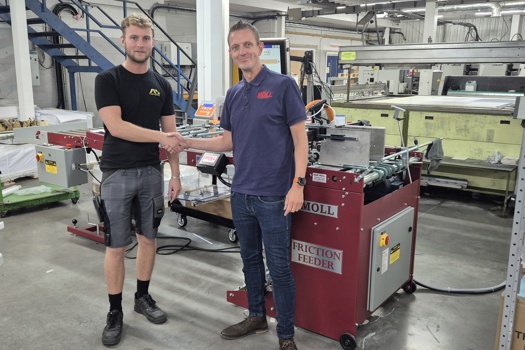Celebrating 15 years since launching Future Recruitment as a specialist headhunting service for the print industry, Houghton says that during that time finding highly experienced candidates has always been a challenge, and that now that pool has become even smaller due to a historical reluctance to invest in training.
“I would say these days, although the market is pretty buoyant, more clients are looking internally to recruit rather than looking around the industry. Candidates are getting older, the average age is about 50, and the younger generation just isn’t going into the print industry,” said Houghton.
“Employers have now realised they need to invest in training. We do it, everyone needs to do it and I think that print really missed that boat years ago so there is this huge gap where no-one is coming through.
“If the print industry had been better at taking on graduates and trainees and invested in training them we’d be better off now,” she added.
Houghton explained that after starting the business 15 years ago with now general manager Clare Devlin the business expanded its existing portfolio of general print, signage and wide format and to include packaging, four years later. The division now makes up around 60% of the £1.2m-turnover, 18-staff firm’s work.
Houghton said that with Brexit looming print businesses seemed even more determined to look internally for appointments and to hold onto their staff in general.
“We aren’t worried at this stage; people are sticking with what they know but we are still placing plenty of sales, customer service and production roles. What I think perhaps the industry needs to do to safeguard for the future is to focus on its sales skills and training.
“The next generation is just not a generation of sales people – they’ve got no idea and no interest. But without sales people you haven’t got a business so maybe going forward that is something we need to focus on,” she added.
BPIF chief executive Charles Jarrold said that the print industry is not alone in its struggle to recruit young blood.
"By offering a wide range of opportunities, skilled interesting roles, excellent training, opportunities for progression, and engaging with schools and local communities, this challenge is lessened. There's no simple answer to a complex challenge, but all organisations in our sector can play a role," he added.
Jarrold said that BPIF research had in fact revealed that the average age in the industry now is in fact around 43 and that although strong apprenticeship programmes are in place across the sector, the need for highly trained and skilled people - especially in production but increasingly in management, IT and process design - remains unchanged.
"Historically, where the sector has been a bit weaker is on the QBE (qualified by experience) side, with staff promoted into more managerial roles, and expected to be able to adapt and learn in roles that often require a different approach to those in their previous roles. It's not been surprising to see some very capable staff struggle in these situations."
It was therefore great news for the sector, he said, when the government kick-started the BPIF's more advanced Level 4 or Level 5 programmes in leadership and management a few years ago.
"The sector now has increasing numbers of highly experienced, practical industry experts who have also benefited from rigorous training in best practice approaches to leadership, management and development - that's a great thing," he added.










